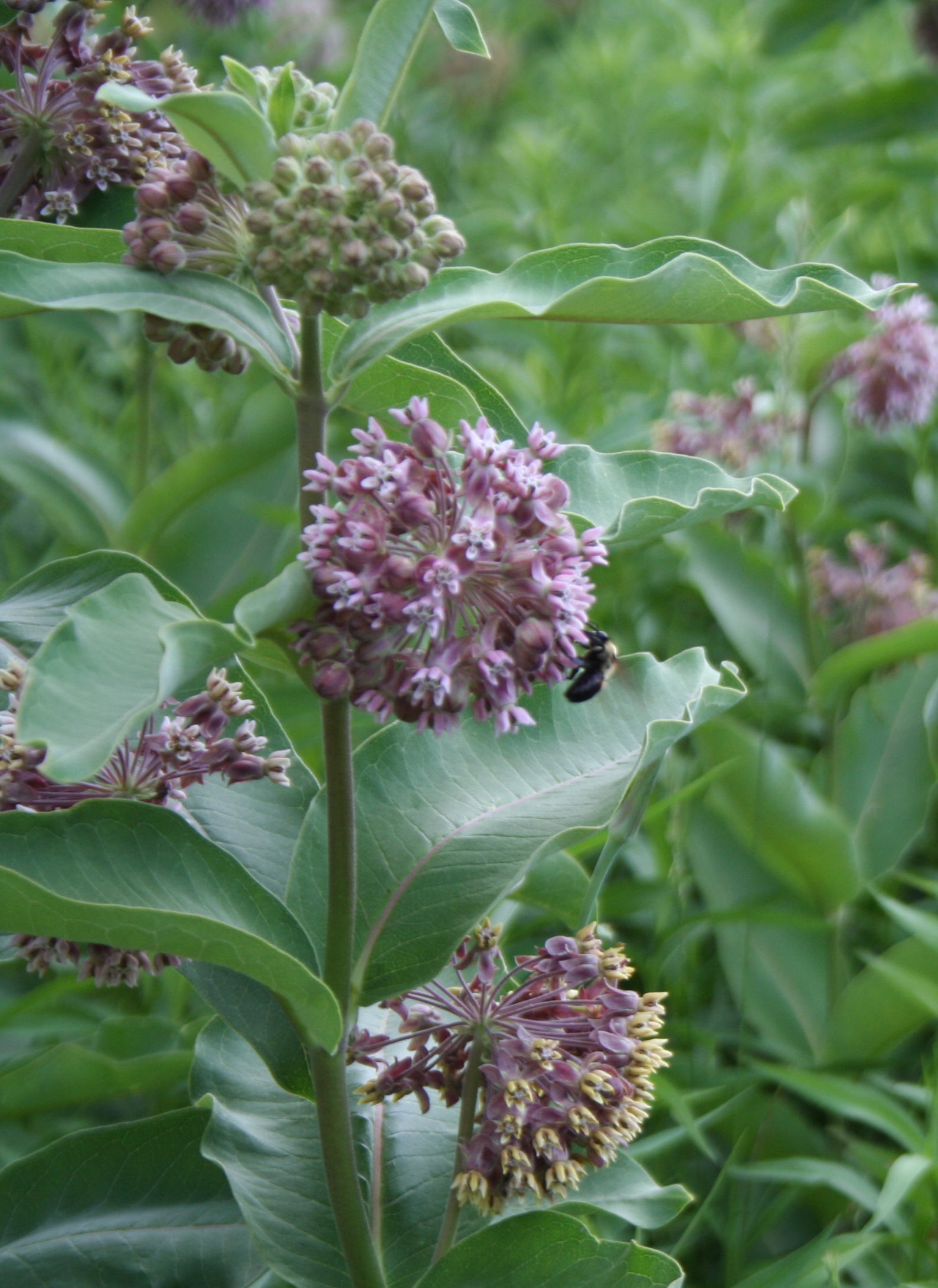Walking around the ponds near our house this spring, I’ve noticed this has been a great year for milkweed (Asclepias) with stands of it everywhere and many of the plants now in beautiful bloom. This plant gets its name partly because it spreads like a you-know-what, but in the case of this plant all that spread is to the benefit of bees and especially monarch butterflies.
I like the look of milkweed for both its broad leaves and pink, pom-pom flowers. The kind near my house is called common milkweed (Asclepias syriaca). It grows about 4 feet tall and has round, pinkish blooms that bees adore. But its real benefit is that it is the only plant Monarch butterfly caterpillars feed on. Last year, I planted a special type to attract butterflies — and it worked, except that the caterpillars ate the plant down to the stalk! It’s fun for children to check the plants for signs of eggs or tiny caterpillars munching away—they really like the leaves.
I’ve seen Monarchs three times in the past two days on these plants, so I’m hoping that this year’s big crop of milkweed will mean an equally large crop of butterflies.

After reading this post, I’ve decided to leave a stand of milkweed for the butterflies, too. The flowers really are pretty even if no caterpillars take advantage of the plant.
I’m treasuring every milkweed plant I find, but I haven’t seen a single monarch so far, and very very very few last year.
I planted some swamp milkweed last year…and this year…
one dozen little monarchs caterpillars…we brought them in and ‘raised’ them and enjoyed setting them free in our garden to lay more eggs!
http://www.gustgab.com/2011/07/becoming-butterflies-our-monarchs-have.html
Live near liberty Missouri. Spotted first monarch caterpillar on this day. I would guess it is about a week old. I have swamp and the typical wild milkweed. I am very excited to see the new generation..!